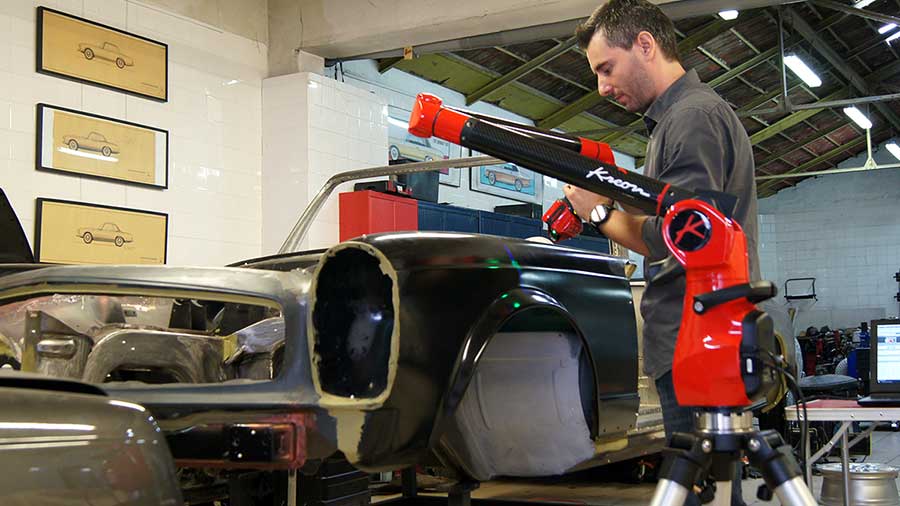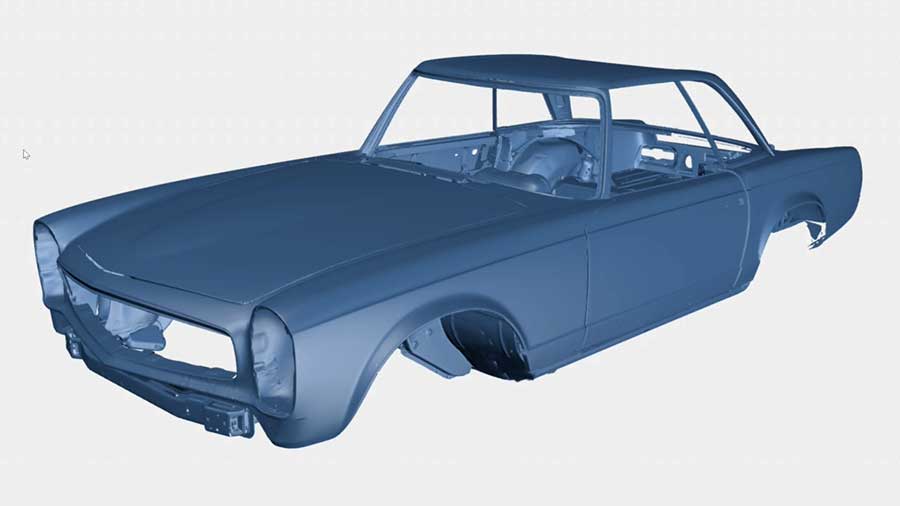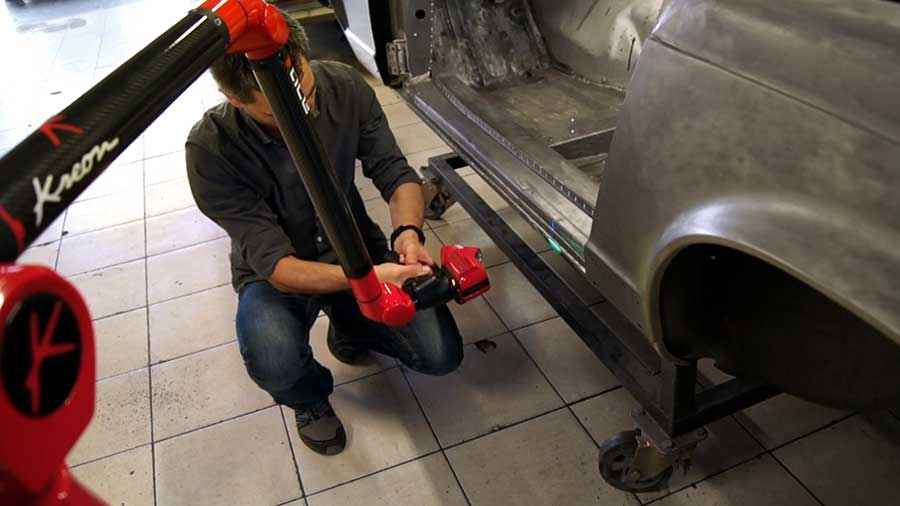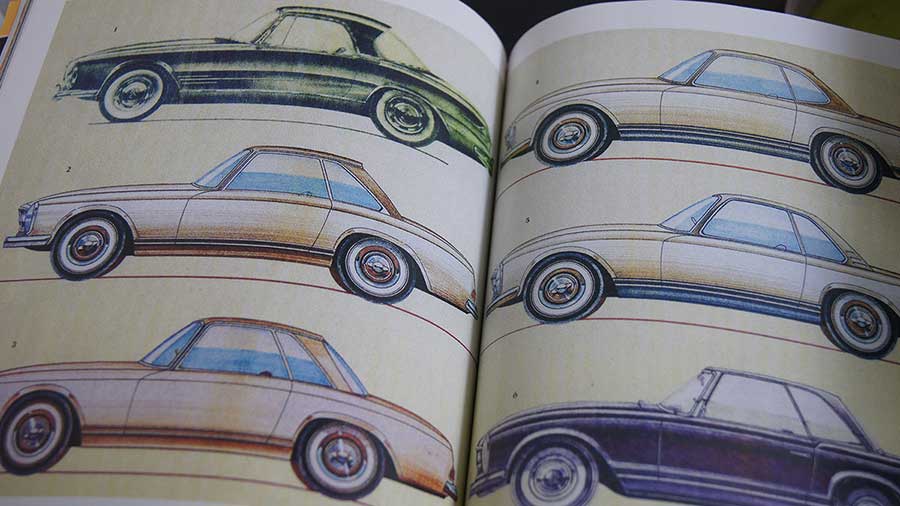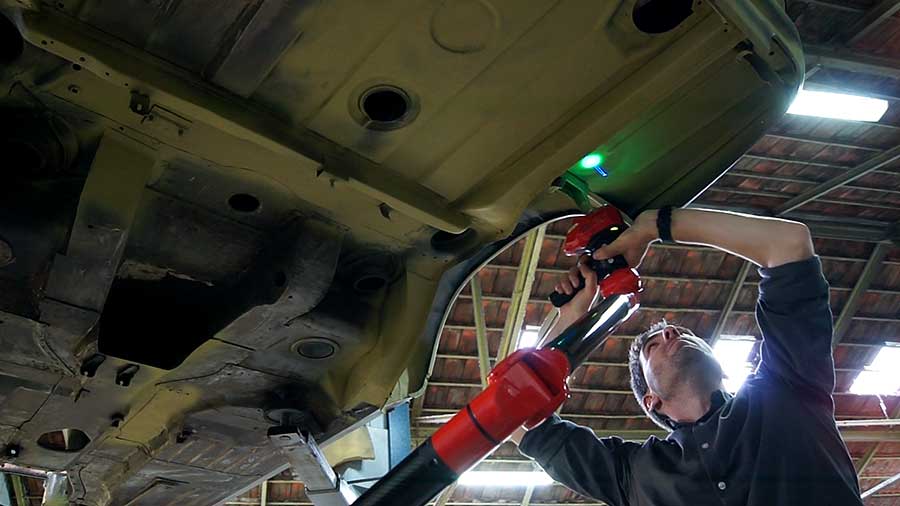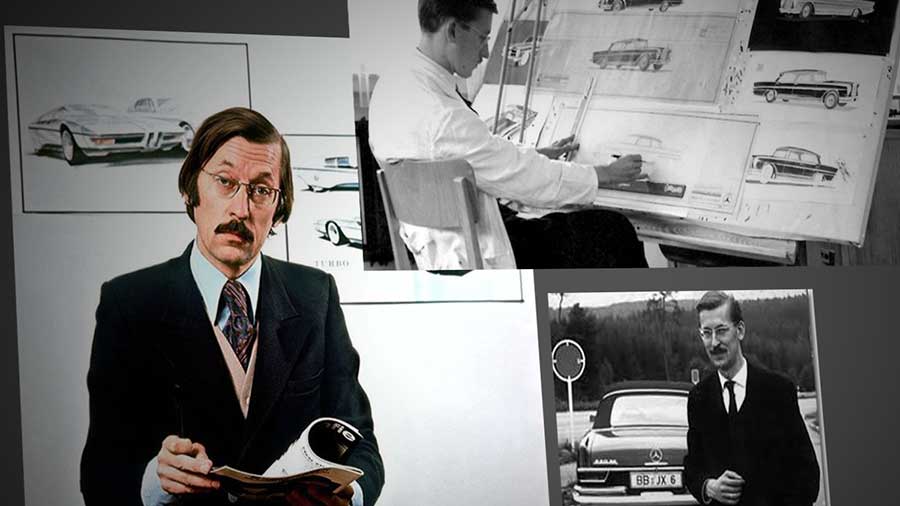Digimeca
La empresa de ingeniería Digimeca utiliza un brazo de medición con escáner Kreon Ace Skyline para restaurar un coche legendario.
Tecnología: Brazo de medición Kreon
Sector: Automoción
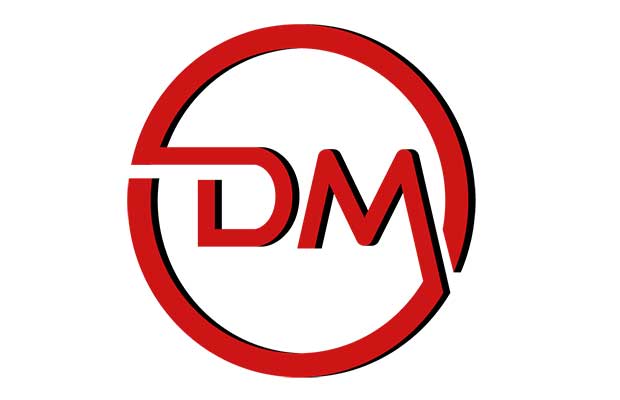
Digimeca digitaliza la carrocería de una pagoda de Mercedes como parte de un proyecto atípico.
Ubicados en Burdeos, los Ateliers Paul Bracq se han ganado su lugar en la historia del automovilismo. El reconocido diseñador de automóviles Paul Bracq comenzó a trabajar para los principales fabricantes de automóviles como Mercedes, BMW y Citroën en 1957. Contribuyó al diseño de varios modelos de vehículos, incluida la elegante Mercedes Pagoda (230 SL), que salió de las líneas de producción en 1963.
En 2013, Boris Bracq decidió dar una nueva vida a las viejas leyendas concebidas por su padre y establecer su propio taller de restauración de automóviles, Les Ateliers Paul Bracq.
Un nuevo proyecto se fraguó en estos talleres: transformar una Pagoda de Mercedes, originalmente un descapotable, en una versión coupé de 2 x 2 agregando dos asientos en la parte trasera. No se fabricó originalmente esa versión de Pagoda, pero saldrá un modelo de los Ateliers dentro de unos meses. Extender una pagoda existente primero requiere cortarla por la mitad justo detrás de las puertas, luego realinear las partes estructurales y del cuerpo.
Para llevar a cabo esta hazaña, particularmente para crear nuevas piezas de carrocería (techo, puertas), los Ateliers Paul Bracq han introducido la experiencia de Digimeca.
Diariamente, Digimeca utiliza el brazo de medición Kreon Ace con un escáner 3D Skyline Eyes para las siguientes aplicaciones:
- Escaneado para ingeniería inversa de piezas antiguas que no tienen CAD
- Escaneado de prototipos al modificar o crear piezas utilizando técnicas manuales
- Escaneado para trabajos de impresión 3D con el objetivo de duplicar piezas existentes
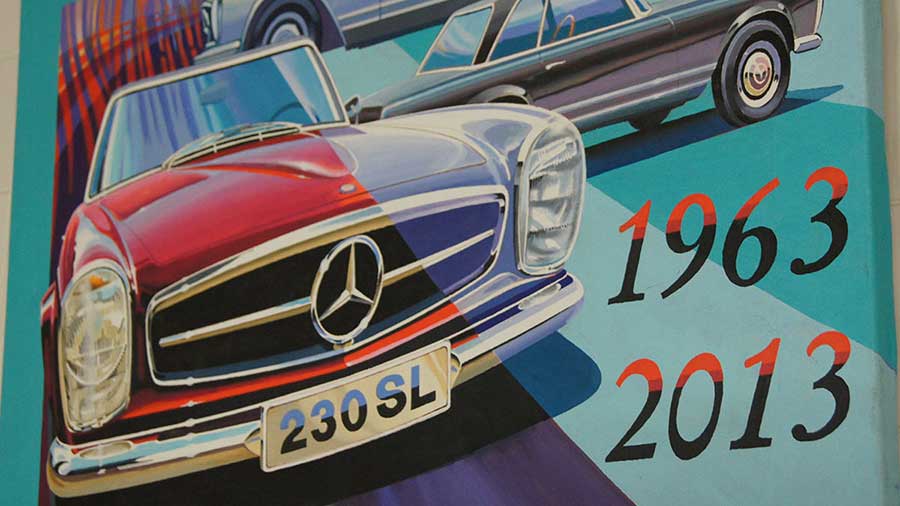
Digimeca ha propuesto una digitalización 3D completa de la Pagoda de Mercedes. Si bien esto puede parecer una tarea meticulosa, gracias al brazo de medición Ace y al escáner 3D Skyline Eyes ultra preciso, se puede completar con bastante rapidez y hasta los detalles más pequeños. Desafortunadamente, dado que los mecánicos están trabajando en el vehículo en paralelo, no se puede escanear el automóvil de una vez, sino solo de acuerdo con las actividades del taller en curso.
La estructura desnuda de la Pagoda se escanea primero en el suelo y luego se coloca en un puente para medir por contacto las partes inferiores y la parte interior. A medida que el vehículo está en proceso de restauración, la chapa a veces se pinta y otras no, pero el escáner se adapta automáticamente a estos diferentes acabados. En última instancia, se necesitarán dos días para escanear toda la carrocería.
Digimeca usa esferas colocadas en la carrocería para reposicionar las sondas en función de las diferentes posiciones del brazo alrededor del vehículo. Durante el escaneado, el software Geomagic Wrap genera una malla poligonal en tiempo real, luego se usa para reposicionar, limpiar superficies, rellenar agujeros, etc.
Al recibir la malla completa del vehículo, Boris Bracq comenzará la ingeniería inversa de todo el automóvil. Las superficies se diseñarán utilizando el software de modelado 3D Rhinoceros 3D. Los datos CAD se utilizarán para fabricar las piezas nuevas. Por cierto, la digitalización completa de la pagoda es parte de un proyecto de conservación más ambicioso, junto con el archivo de la documentación técnica original del vehículo.
Sobre Digimeca:
Digimeca ofrece servicios de ingeniería y, en particular, ingeniería inversa para los sectores de automoción y aeronáutico. Equipada con impresoras 3D, la compañía también está especializada en la producción de prototipos utilizando fabricación aditiva.



